Tim Cartmell – XingYi NeiGong (Longevity Excercises)
XingYi_NeiGong-Tim_Cartmell-VHSrip.mpg
[VHS transfer (mpg)]
Description
TIM CARTMELLTim Cartmell is a martial artist best known as an author and translator of martial arts books. Tim is a black belt in Brazilian Jiu Jitsu. He placed first at the 2003 IBJJF Pan Championship as a brown belt (Senior 2)[1] and first at the 2004 IBJJF Pan Championship as a black belt XING YI QUANXingyiquan (Chinese: 形意拳; pinyin: Xíng yì quán; Wade-Giles: Hsing I Ch’üan) is one of the major “internal” (Wudang) Chinese martial arts (an even broader term encompassing the internal arts is nèijiā). The word translates approximately to “Form/Intention Boxing”, or “Shape/Will Boxing”, and is characterized by aggressive, seemingly linear movements and explosive power. There is no single organizational body governing the teaching of the art, and several variant styles exist.A practitioner of xingyiquan uses coordinated movements to generate bursts of power intended to overwhelm the opponent, simultaneously attacking and defending. Forms vary from school to school, but include barehanded sequences and versions of the same sequences with a variety of weapons. These sequences are based upon the movements and fighting behavior of a variety of animals. The training methods allow the student to progress through increasing difficulty in form sequences, timing and fighting strategy.Legend The “Four Generals of Zhongxing” painted by Liu Songnian during the Southern Song Dynasty. Yue Fei is the second person from the left. This portrait is believed to be the “truest portrait of Yue in all extant materials.”The exact origin of xingyiquan is unknown. The earliest written records of it can be traced to the 18th century to Ma Xueli of Henan Province and Dai Long Bang of Shanxi Province. Legend, however, credits the creation of xingyiquan to the renowned Song Dynasty (960-1279 AD) general Yue Fei.According to the book Henan Orthodox Xingyi Quan written by Pei Xirong (Chinese: 裴锡荣) and Li Ying’ang (Chinese: 李英昂), Xingyi Master Dai Long Bang “…wrote the Preface to Six Harmonies Boxing in the 15th reign year of the Qianlong Emperor [1750]. Inside it says, ‘…when [Yue Fei] was a child, he received special instructions from Zhou Tong. Extremely skilled in spearfighting, he used the spear to create fist techniques and established a skill called Yi Quan . Meticulous and unfathomable, this technique far outstripped ancient ones.”Throughout the Jin, Yuan and Ming Dynasties few individuals had studied this art, one of them being Ji Gong (also known as Ji Longfeng and Ji Jike) of Shanxi Province. After Yue Fei’s death, the art was lost for half a millennium. Then, during the Ming and Qing Dynasties in Shaanxi Province’s Zhongnan Mountains, Yue Fei’s boxing manual was discovered by Ji Gong.Part of the series onChinese martial arts List of Chinese martial arts Terms Kung fu (功夫)Wushu (武術) Historical places Shaolin Monastery (少林寺)Wudang Mountains (武當山)Mount Emei (峨嵋山)Kunlun Mountains (崑崙山) Historical people Five Elders (五祖)Yim Wing-chun / Yan Yongchun (嚴詠春)Hung Hei-gun / Hong Xiguan (洪熙官)Dong Haichuan (董海川)Yang Luchan (楊露禪)Wu Quanyou (吳全佑)Chen Fake (陈发科)Chan Heung / Chen Xiang (陳享)Wong Fei-hung / Huang Feihong (黃飛鴻)Huo Yuanjia (霍元甲)Yip Man / Ye Wen (葉問)Bruce Lee / Li Xiaolong (李小龍) Legendary figures Bodhidharma / Putidamo / Damo (菩提達摩)Zhang Sanfeng (張三丰) Related Hong Kong action cinemaWushu (sport)Wuxia (武俠) HistoryYang Jwing-Ming argues that aspects of xingyiquan (particularly the animal styles) are identifiable as far back as the Liang Dynasty at the Shaolin Temple. Yue Fei, therefore, did not strictly invent xingyiquan, but synthesised and perfected existing Shaolin principles into his own style of gongfu which he popularised during his military service. Because this theory holds that Yue Fei based his style on existing Shaolin techniques, some consider Bodhidharma to be the originator of xingyiquan. Nonetheless, according to Yang, Yue Fei is usually identified as the creator because of his considerable understanding of the art (as shown in the work The Ten Theses of Xingyiquan, credited to Yue) and his cultural status as a Chinese war hero.Other martial artists and Chinese martial art historians, such as Miller, Cartmell, and Kennedy, hold that this story is largely legendary; while xingyiquan may well have evolved from military spear techniques, there is no evidence to support that Yue Fei was involved or that the art dates to the Song dynasty. These authors point out that the works attributed to Yue Fei’s role long postdate his life, some being as recent as the Republican era, and that it was common practice in China to attribute new works to a famous or legendary person, rather than take credit for oneself. One source claims that the author of the “preface” is unknown, since no name is written on the manuscript. Most practitioners just assume it was written by Dai Long Bang. Some researchers of martial arts believe that it was actually written in Shanxi during the final years of the 19th century. In addition, historical memoirs and scholarly research papers only mention Zhou Tong teaching Yue archery and not spear play. Yue historically learned spear play from Chen Guang (陈广), who was hired by the boy’s paternal grandfather, Yao Daweng (姚大翁).With the late Ming-era and Ji Longfeng, evidence for the art’s history grows firmer. Ji Longfeng’s contributions to the art are described in the Ji Clan Chronicles (姬氏族谱; pinyin: Ji Shi Jiapu). Like the Preface, the Chronicles describes Xingyiquan as a martial art based on the combat principles of the spear. The Chronicles, however, attributes this stylistic influence to Ji himself, who was known as the “Divine Spear” (神槍; pinyin: Shén Qiāng) for his extraordinary skill with the weapon.The master who taught xingyiquan to Ma Xueli is conventionally identified as Ji Longfeng himself. However, the traditions of the Ma family itself say only that Xueli learned from a wandering master whose name is unknown. Ji Longfeng referred to his art as Liu He, The Six Harmonies, a reference to the most highly developed spear style practiced in the late Ming military.The Preface identifies Cao Ji Wu as a student of Ji Longfeng and the master who taught xingyiquan to Dai Long bang. However, other sources identify Dai’s teacher variously as Li Zheng or Niu Xixian.Xingyiquan remained fairly obscure until Li Luoneng (also known as Li Nengran) learned the art from the Dai family in the 19th century. It was Li Luoneng and his successors—which include Guo Yunshen, Li Cunyi, Zhang Zhaodong, Sun Lutang, and Shang Yunxiang—who would popularise xingyiquan across Northern China. Sun Lutang exchanged knowledge with Fu Chen Sung, who subsequently took this branch of the art to southern China.Recent historyA simplified version of xingyiquan was taught to Chinese officers at the Military Academy at Nanjing during the Second Sino-Japanese War for close quarters combat. This included armed techniques such as bayonet and sabre drills alongside unarmed techniques.Xingyiquan forms have been adapted to fit the needs of modern practitioners of the competitive sport of Wushu. The style is relatively rare in competitions because all wushu practitioners must compete in several mandatory events, which make xingyi a secondary priority in wushu circles.Disputed historyAncient Chinese texts, the source of xingyiquan knowledge, often contain characters whose meanings are obscure or have disappeared completely from the language. Specialised terms which describe historically-specific concepts (names of ancient weapons for example) are commonly interpreted with regards for their closest, modern linguistic equivalent. The results can be problematic, producing translations which are linguistically correct but inconsistent within a fighting or martial context.Jargon from other martial arts seems to have entered the xingyiquan vocabulary through cross-training. For example, some schools refer to a training method of “Xingyi Push Hands” – a term more commonly in use in training taijiquan – which may be called by other schools “Five Elements Fighting”The recognised founder of baguazhang, Dong Hai Chuan, was reputed to have fought Guo Yunshen with neither able to defeat the other – though it is possible that they were training together. It would have been controversial at the time for Dong Hai Chuan to have studied under Guo Yunshen, since Dong was the older of the two. The most neutral viewpoint would be to say that they trained together, which may explain the stylistic similarities between baguazhang and the xingyiquan monkey. Frantzis[13] argues that this encounter never took place and that Guo and Dong had little contact with each other. Frantzis argues that a xingyiquan-baguazhang exchange was more likely to have occurred in Tianjin c. 1900 where xingyi masters Li Cunyi and Zhang Zhaodong, Bagua master Cheng Tinghua, and four other xingyi and bagua teachers lived together (Frantzis, 1998, p. 179). Sun Lutang states in his autobiography that the legendary fight between Guo Yunshen and Dong Hai Chuan never happened. The book states that the truth of the matter is that Guo Yunshen actually fought one of his older xingyi brothers and lost. Sun Lutang was a student of both Guo Yunshen and Cheng Tinghua so this stance on the subject seems to be one of the most accurate.Treating the story of Dong Hai Chuan and Guo Yunshen as allegory, however, reveals a common training protocol among xingyiquan and baguazhang practitioners. Often, because baguazhang requires significantly more time for a practitioner’s skill to mature, it is acceptable to learn xingyiquan first or simultaneously. Such a practitioner develops a tactical vocabulary that is more readily apparent than the core baguazhang movements.The founder of Yiquan, Wang Xiangzhai studied under Guo Yunshen, and similarities in techniques between these arts can be seen. The primary standing postures of Yiquan trains separately what xingyiquan santishi (三體式) trains simultaneously.Characteristics and principlesXingyiquan features aggressive shocking attacks and direct footwork. The linear nature of xingyiquan hints at both the military origins and the influence of spear technique alluded to in its mythology. Despite its hard, angular appearance, cultivating “soft” internal strength or qi is essential to achieving power in Xingyiquan.The goal of the xingyiquan exponent is to reach the opponent quickly and drive powerfully through them in a single burst — the analogy with spear fighting is useful here. This is achieved by coordinating one’s body as a single unit and the intense focusing of one’s qi.Efficiency and economy of movement are the qualities of a xingyiquan stylist and its direct fighting philosophy advocates simultaneous attack and defence. There are few kicks except for extremely low foot kicks (which avoids the hazards of balance involved with higher kicks) and some mid-level kicks, and techniques are prized for their deadliness rather than aesthetic value. Xingyiquan favours a high stance called Sāntǐshì (三體式 / 三体式), literally “three bodies power,” referring to how the stance holds the head, torso and feet along the same vertical plane. A common saying of xingyiquan is that “the hands do not leave the heart and the elbows do not leave the ribs.”The use of the Santishi as the main stance and training method originated from Li Luoneng’s branch of xingyi. Early branches such as Dai family style do not use Santi as the primary stance nor as a training methodThis tape is about only the longevity exercises practiced by the masters.Enjoy!!!
You must be logged in to post a review.

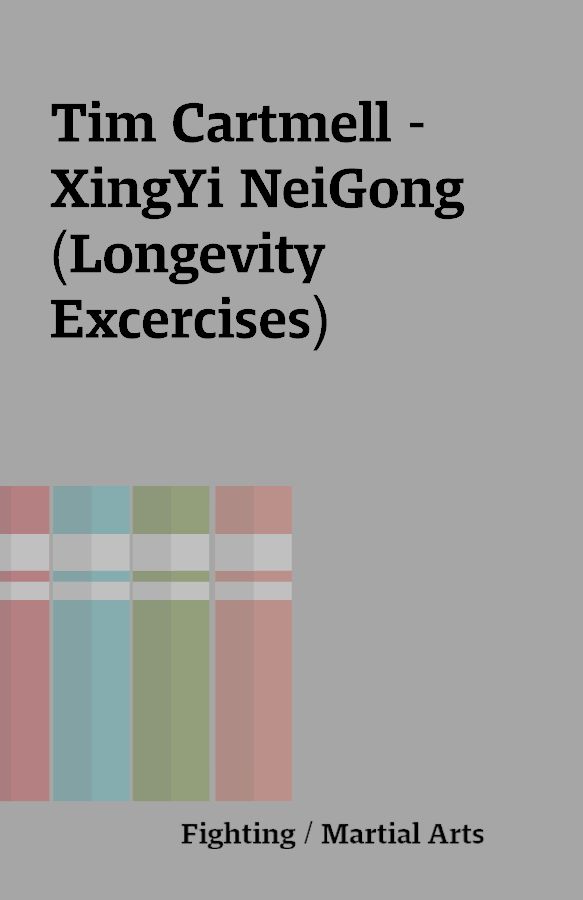
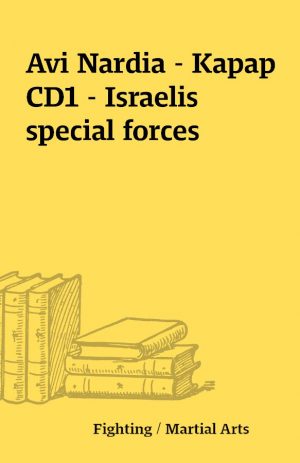
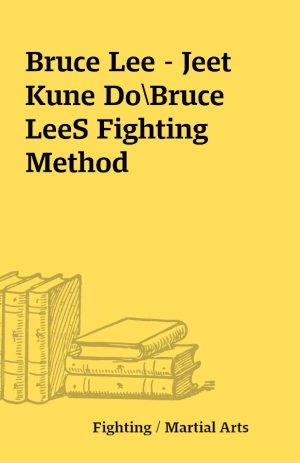
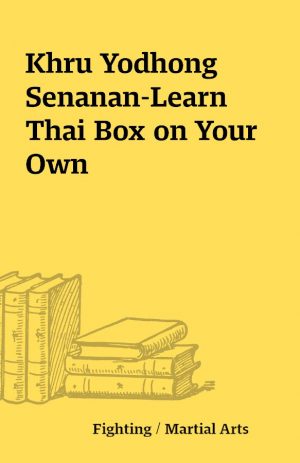
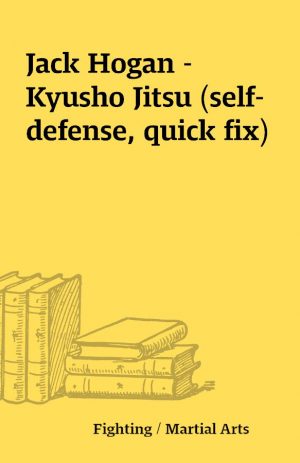
Reviews
There are no reviews yet.